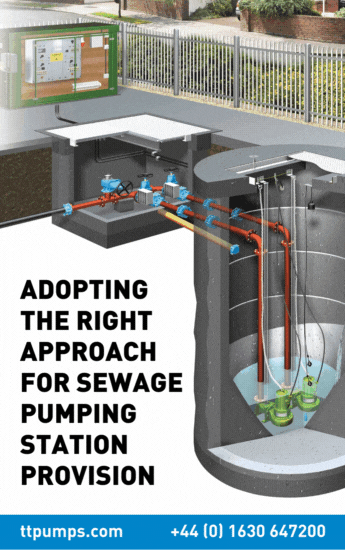With Brexit causing uncertainty in the construction industry over the future availability of labour, and its costs, the issue of the UKs ‘housing crisis’ isn’t likely to dampen down any time soon.
Positive initiatives and efficient processes are needed to help the sector deliver the number of homes that Brits can pay for — which is where LPG energy could come into play. In this piece, LPG suppliers Flogas take a look at how LPG is assisting in the provision of affordable housing for UK buyers and why it’s vital that the sector and government gets behind it if they want to hit targets and meet housing demands.
An overview of the UK and affordable housing
Recent research and data into housing in the UK show that there are clearly issues that must be addressed. A government initiative to build 200,000 discounted homes to first-time buyers had not produced a single home by the end of 2017, according to a report by the Independent. Similarly, approximately 12% of chartered surveyors doubt that the government will be able to achieve its 300,000-new-homes-a-year target in 2018, with even Parliamentary Affairs Manager of the Royal Institution of Chartered Surveyors (RICS), Lewis Johnston, stating that it was “clear more radical action is needed.”
Currently, there is also conflict between the government and local councils regarding affordable housing in the UK. In a bid to boost availability, the government has claimed that councils which don’t build enough new homes will lose the right to determine the location of subsequent new houses. This ruling is part of a planning policy framework which details regulations regarding the number of homes that each council must construct — which considers localised aspects of an area including local house costs and average wages. Essentially, if a location has a particularly high level of unaffordability, that council will need to build a greater number of new, affordable homes.
But in cities and towns that are dense with built-up areas, could this mean that councils will be forced to build on rural areas? Perhaps. Former Housing Secretary and current Home Secretary, Sajid Javid, revealed plans in March to create several new towns between Oxford and Cambridge. He commented: “Along that corridor, there’s an opportunity to build at least four or five garden towns and villages with thousands of homes.”
According to the Town and Country Planning Association (TCPA), garden villages are ideally constructed away from established settlements and created on a basis of industry and jobs, with an aim to create diverse, well-designed and affordable homes.
Although this project is a potential solution to more affordable housing, the issue of powering and maintaining garden towns and villages in rural locations is a point that needs consideration.
The role of LPG?
There are approximately four million homes not connected to the mains gas grid in the UK. According to the Non Gas Map, which was created in collaboration with the Department for Business, Energy and Industrial Strategy; the reliance on the mains grid varies significantly across the UK. Certain locations — such as northern Scotland and central Wales — appear to show less dependence on being connected to the main network, while others, including north-east England and the Home Counties, have a greater percentage of homes that rely on energy provided by mains gas.
One of the concerns of placing new housing projects in rural areas is the delivery of sufficient energy, both during the development and for the subsequent homeowners. However, the data above shows that there is an opportunity to construct homes in areas that aren’t connected to the mains network, granted that an equally-efficient alternative is implemented in its place. But how will this encourage affordable housing growth?
LPG may offer those in affordable housing development and construction the chance to ease the pressure of building in inner cities and instead opt for open, rural spaces where there is greater space and opportunity. Currently, a small number of major commercial developers create the majority of the UK’s housing. By using LPG as an easy alternative to main network connection, we can widen the number of locations that a housing project can take place. Consequently, more small- and mid-size companies should have a greater chance of securing a plot for development in the sector and we may see a growth in affordable housing as a result.
LPG also has a variety of advantages when it comes to affordable housing, one of which is the fact that gas bottles, cylinders and tanks make LPG easy to transport and simple to store during the construction process. Keeping production costs as low as possible is essential to all businesses — no firm wants to go over budget. However, the ease of supplying and stockpiling LPG may help developers keep a track of energy costs and ensure that mains grid issues, such as power cuts, won’t affect productivity — another potentially costly side-effect.
It’s no secret that there’s a nationwide drive towards green practices and reducing our carbon footprints. In an industry like construction and housing, it’s easy to adopt less environmentally friendly products and practices. However, the demand to bring these down will only grow as the government strives to achieve its target of lowering carbon emissions by at least 80% of 1990 levels by 2050 — and not doing so may cost companies in the form of taxes and penalties. Fortunately, LPG is a relatively clean form of energy, releasing just 81% of the carbon dioxide that oil does and 70% of the carbon dioxide that coals emits. With tax relief offered to energy-efficient businesses, it’s helpful to be as eco-friendly as possible. If developers of affordable housing choose to utilise LPG, this could also work towards greater numbers of affordable housing projects.
Evidently, there’s opportunity for affordable housing if developers take advantage of LPG. With demand increasing and only a few practical initiatives to ease the strain, such as garden villages, it seems as if they sector needs all the help it can get.




